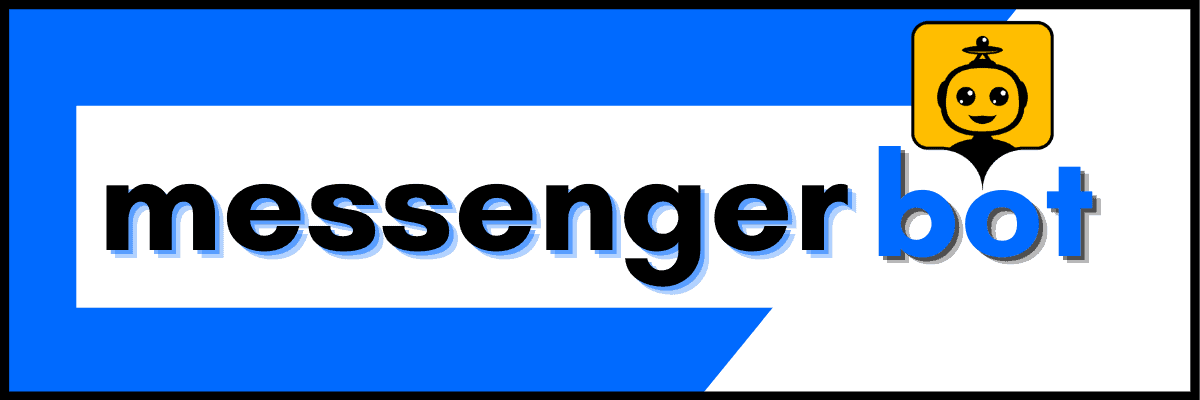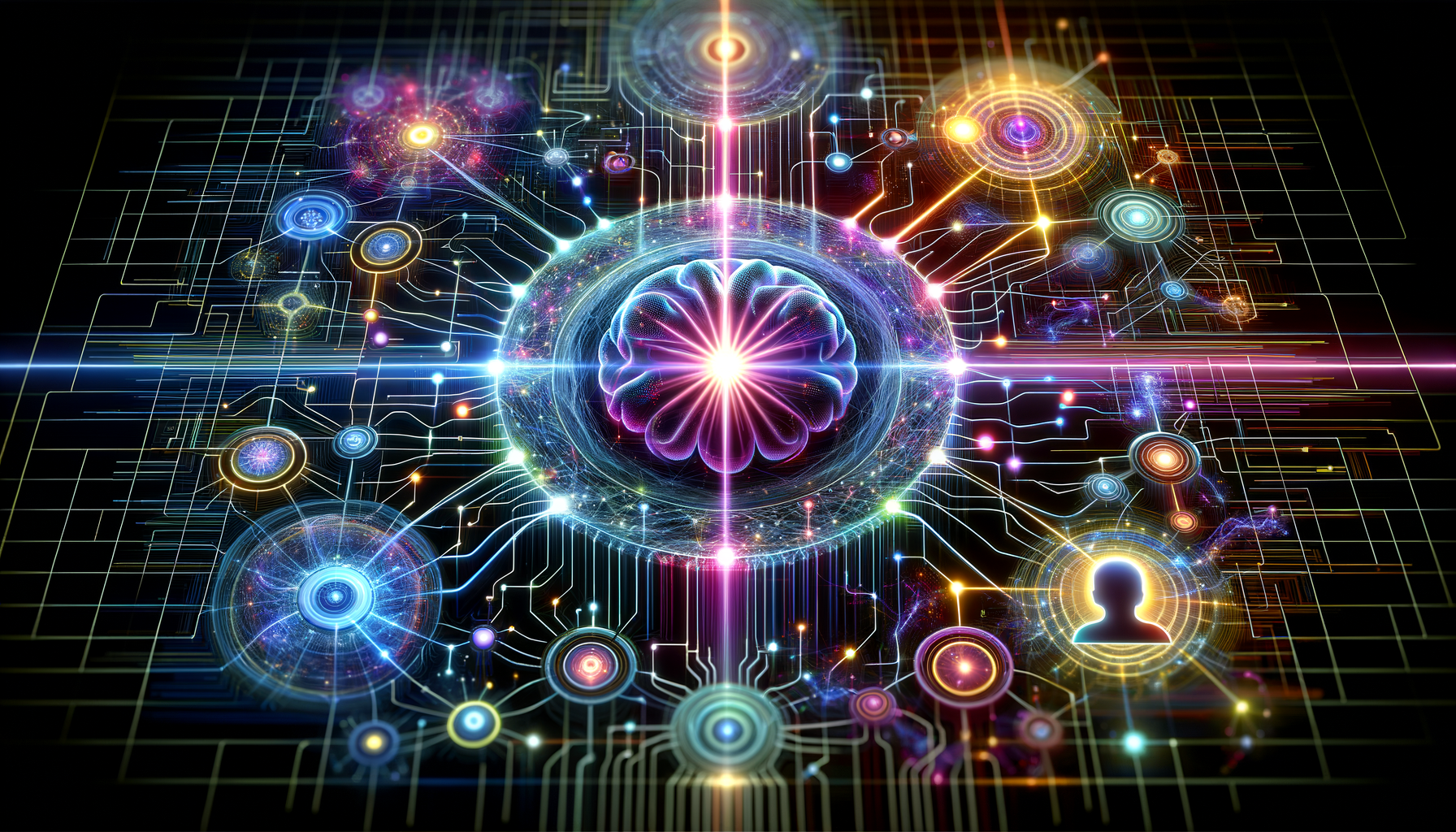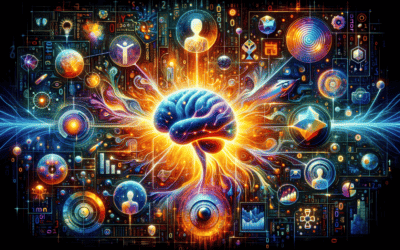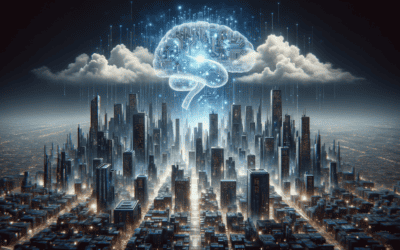In today’s digital landscape, chatbots powered by artificial intelligence (AI) are revolutionizing how we interact with businesses, services, and information. These conversational interfaces, fueled by cutting-edge technologies like natural language processing and machine learning, are rapidly transforming customer experiences across industries. As AI chatbots become more advanced, understanding the underlying technologies that drive their intelligence is crucial. This comprehensive guide delves into the fascinating world of chatbots and AI, exploring how these innovative solutions are reshaping the way we communicate and access information. From decoding the fundamentals of chatbot AI to examining the differences between chatbots and AI, this article offers a deep dive into the various types of chatbots, the role of AI in powering their capabilities, and the future of conversational interfaces.
I. How do chatbots use artificial intelligence?
A. Chatbot AI Fundamentals: Understanding the Technology Behind the Chat
Chatbots are powered by artificial intelligence (AI), specifically leveraging natural language processing (NLP) and machine learning (ML) algorithms to comprehend and respond to human language inputs. This advanced technology enables chatbots to engage in more natural and contextual conversations, understand complex queries, and provide personalized responses.
The process of how chatbots utilize AI typically involves several key steps:
- Intent Recognition: The chatbot uses NLP techniques like entity extraction and intent classification to understand the user’s query and determine their goal or intent.
- Entity Extraction: The system identifies and extracts relevant entities (people, places, objects, etc.) from the user’s input to better comprehend the context.
- Context Analysis: The chatbot analyzes the conversation history and any additional contextual information to provide a relevant and coherent response.
- Response Generation: Based on the identified intent and extracted entities, the chatbot retrieves or generates an appropriate response from its knowledge base or using generative language models.
- Continuous Learning: Many modern chatbots employ machine learning to improve their performance over time by learning from past interactions and user feedback.
B. Machine Learning: The Key to Intelligent Chatbot Interactions
Machine learning plays a crucial role in enabling chatbots to deliver intelligent and human-like interactions. By leveraging advanced ML algorithms and techniques, chatbots can continuously learn and adapt to provide more accurate and contextually relevant responses.
Some of the key machine learning capabilities that power chatbot AI include:
- Natural Language Understanding (NLU): NLU models help chatbots comprehend the nuances of human language, including slang, idioms, and contextual meanings.
- Sentiment Analysis: By analyzing the sentiment behind user inputs, chatbots can adjust their tone and responses accordingly, leading to more empathetic and personalized interactions.
- Conversational Memory: Machine learning enables chatbots to maintain and reference conversation history, ensuring coherent and contextually relevant responses.
- Continuous Improvement: Through reinforcement learning and feedback loops, chatbots can continuously refine their knowledge and improve their performance over time.
As machine learning techniques continue to advance, chatbots will become increasingly sophisticated, capable of engaging in more natural and human-like conversations across various domains and industries. AI chat assistants like Brain Pod AI are already demonstrating the power of cutting-edge AI in delivering exceptional conversational experiences.

Here is the content for Section II “What is the difference between chatbots and artificial intelligence?” and the subsections:
What is the difference between chatbots and artificial intelligence?
Chatbots and artificial intelligence (AI) are closely intertwined, yet distinct concepts. While chatbots are often powered by AI technologies, it’s crucial to understand the key differences between them. By grasping this distinction, businesses can harness the full potential of these technologies and deliver exceptional customer experiences.
A. Chatbots vs. AI: Distinguishing the Terms
Chatbots are software applications designed to simulate human-like conversations through text or voice interfaces. They rely on predefined rules, decision trees, and pattern matching to understand user inputs and provide relevant responses. While some chatbots examples can be quite sophisticated, most operate within a limited domain and have a predetermined set of responses.
Conversational AI, on the other hand, is a broader term that encompasses the technologies and techniques used to create more advanced and intelligent conversational systems. It involves the application of natural language processing (NLP), machine learning, and deep learning algorithms to enable computers to understand, process, and generate human-like responses in a more contextual and dynamic manner.
While chatbots are a specific application of conversational AI, not all chatbots are powered by true AI. Some chatbots are based on simple pattern matching and scripted responses, while others leverage more advanced AI techniques for natural language understanding and generation.
B. The Role of AI in Powering Advanced Chatbots
Conversational AI systems can engage in more natural, open-ended conversations by understanding the intent behind user inputs, maintaining context, and generating relevant responses based on the acquired knowledge. They can learn and adapt over time, improving their conversational abilities through continuous exposure to data and interactions.
As businesses strive to deliver exceptional customer experiences, the integration of AI into chatbots has become increasingly important. By leveraging advanced AI techniques like natural language processing (NLP) and machine learning, chatbots can provide more intelligent, personalized, and contextual responses, enhancing the overall user experience.
Platforms like Messenger Bot are at the forefront of this AI-driven chatbot revolution, empowering businesses to create intelligent conversational interfaces that can understand complex queries, offer personalized recommendations, and even handle multi-turn conversations seamlessly.
In summary, while chatbots are focused on specific tasks and interactions, conversational AI aims to create more intelligent and adaptable conversational systems capable of understanding and responding to a wider range of inputs and contexts. By harnessing the power of AI, businesses can elevate their customer service, sales, and support experiences to new heights.
III. What are the four types of chatbots?
A. Retrieval-Based Chatbots: Simple and Efficient
Retrieval-based chatbots are a straightforward yet effective type of AI chatbot that relies on natural language processing (NLP) and machine learning to understand user queries and retrieve relevant responses from a pre-existing knowledge base or database. This approach allows for quick and accurate responses to common questions or requests, making retrieval-based chatbots an excellent choice for customer service, FAQ assistance, and other scenarios where a finite set of responses is sufficient.
One of the key advantages of retrieval-based chatbots is their simplicity and efficiency. By leveraging a curated knowledge base, these AI chatbots can quickly match user inputs to the most relevant pre-written response, ensuring consistent and accurate information delivery. This approach is particularly useful for businesses that receive a high volume of repetitive inquiries, as it can significantly reduce response times and improve customer satisfaction.
While retrieval-based chatbots may have limitations in handling complex or open-ended conversations, they can be easily integrated into existing systems and trained on specific domains or topics. Companies like Intercom and Drift have successfully leveraged retrieval-based chatbots to provide efficient and personalized support experiences for their customers.
B. Generative Chatbots: AI-Driven Conversational Abilities
Generative chatbots represent the cutting edge of AI chatbot technology, leveraging advanced deep learning techniques and natural language generation to engage in more human-like, open-ended conversations. Unlike retrieval-based chatbots, which rely on pre-written responses, generative chatbots can dynamically generate contextually relevant responses based on the user’s input and the conversational flow.
By leveraging large language models and deep learning algorithms, generative chatbots can understand the nuances of human communication, including context, sentiment, and intent. This allows them to provide more personalized and engaging responses, making them well-suited for applications such as virtual assistants, personalized recommendations, and even creative writing tasks.
While generative chatbots offer unparalleled conversational abilities, they also come with challenges, such as ensuring response quality, maintaining coherence over extended dialogues, and addressing potential biases or ethical concerns. Companies like Anthropic and Brain Pod AI are at the forefront of developing advanced generative AI models that can power the next generation of conversational AI assistants.
A. ChatGPT: The Revolutionary AI Chatbot Model
ChatGPT, developed by Anthropic, has taken the world by storm as a cutting-edge AI chatbot model that pushes the boundaries of natural language processing and conversational AI. This revolutionary technology leverages the power of large language models and advanced machine learning techniques to engage in remarkably human-like interactions across a wide range of topics and tasks.
At its core, ChatGPT is a generative AI model trained on vast amounts of data, enabling it to understand and respond to prompts with coherent, contextually relevant, and often creative responses. What sets ChatGPT apart is its ability to engage in freeform conversations, answer follow-up questions, and even tackle complex tasks such as writing, coding, and analysis.
The capabilities of ChatGPT extend far beyond traditional chatbots or virtual assistants. It can generate human-like text on virtually any topic, from creative writing to technical documentation, with remarkable fluency and contextual understanding. Additionally, it can assist with coding and programming tasks, providing code explanations, debugging support, and even generating code snippets from natural language prompts.
However, it’s important to note that while ChatGPT exhibits impressive capabilities, it is not a sentient being with true understanding or consciousness. It is a highly sophisticated language model trained to generate human-like responses based on its training data, but it lacks genuine intelligence or self-awareness.
B. Beyond ChatGPT: Exploring Other AI Chatbot Technologies
While ChatGPT has garnered significant attention and acclaim, it is not the only AI chatbot technology shaping the future of conversational AI. Companies like Brain Pod AI and others are pioneering innovative solutions that leverage AI to enhance customer interactions, streamline workflows, and unlock new possibilities across various industries.
For instance, Messenger Bot offers a powerful automation platform that harnesses the capabilities of AI to manage and optimize interactions across multiple channels, including social media platforms and websites. With features like automated responses, workflow automation, lead generation, and multilingual support, Messenger Bot empowers businesses to deliver exceptional customer experiences while streamlining operations.
Another noteworthy AI chatbot technology is Brain Pod AI’s Multilingual AI Chat Assistant, which enables businesses to break down language barriers and provide seamless customer support in multiple languages. This innovative solution combines advanced natural language processing capabilities with a vast knowledge base, allowing it to understand and respond to inquiries in various languages with remarkable accuracy and context.
As the field of AI continues to evolve, we can expect to see even more groundbreaking advancements in chatbot technologies, pushing the boundaries of what is possible in terms of natural language processing, conversational AI, and intelligent automation.
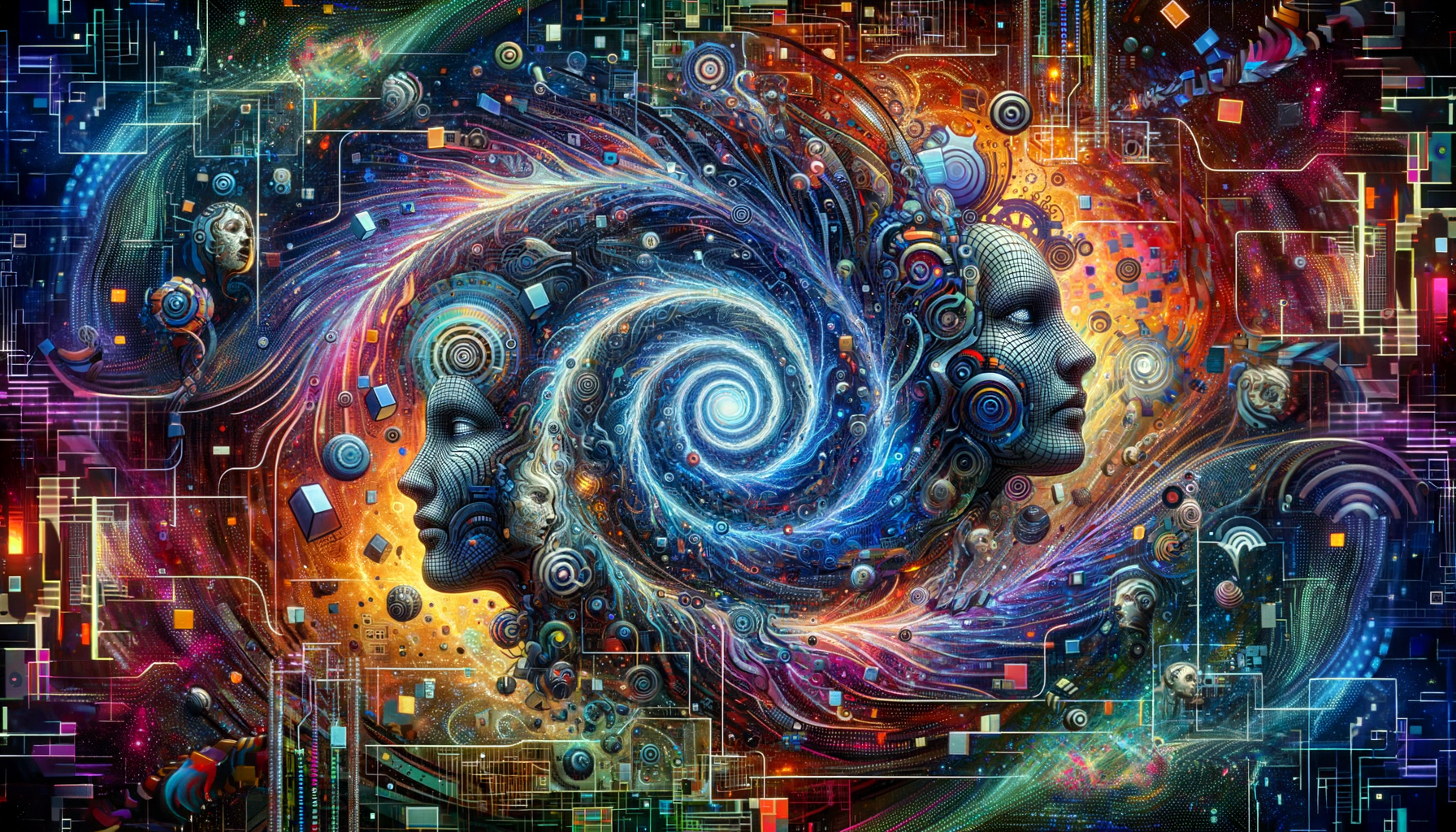
V. What kind of AI is used in chatbots?
A. Natural Language Processing: The Backbone of Chatbot AI
At the heart of every intelligent chatbot lies the powerful technology of Natural Language Processing (NLP). NLP algorithms play a crucial role in enabling chatbots to understand and interpret human language, making conversational interactions seamless and intuitive. By analyzing and extracting meaning from user inputs, NLP empowers chatbots to comprehend intent, identify key entities, and even detect sentiment, paving the way for contextually relevant and natural responses.
At Messenger Bot, we leverage cutting-edge NLP techniques to ensure our chatbots can engage in meaningful and personalized conversations with users across various industries and domains. From intent recognition to entity extraction, our NLP models are meticulously trained on vast datasets to continuously improve their understanding of human language, enabling them to seamlessly communicate in multiple languages and provide accurate, context-aware responses.
Unlike rule-based systems that rely on predefined patterns, our NLP-driven chatbots can adapt and learn from every interaction, continuously refining their language models and improving their conversational abilities. This adaptive nature ensures that our chatbots stay relevant and effective, providing a personalized and engaging experience for users, regardless of their industry or language preference.
B. Deep Learning: Enhancing Chatbot Intelligence
While NLP lays the foundation for chatbot intelligence, Deep Learning (DL) techniques take it a step further, enabling our chatbots to understand and generate human-like language with remarkable accuracy and nuance. By leveraging advanced neural networks and transformer models, such as those employed by Brain Pod AI, our chatbots can engage in more contextual, open-ended conversations, going beyond simple pattern matching or retrieval-based responses.
Deep Learning models like GPT-3 and BERT, which have been trained on vast amounts of textual data, allow our chatbots to grasp the intricacies of language, including context, tone, and sentiment. This empowers our chatbots to generate responses that are not only accurate but also natural and human-like, fostering a conversational experience that feels seamless and intuitive for users.
By combining the power of NLP and Deep Learning, we can create chatbots that truly understand and respond to the nuances of human language, making them invaluable assets for businesses seeking to elevate their customer service, sales, and support operations to new heights.
VI. What do people use chatbots and AI for today?
Chatbots and artificial intelligence have become integral tools in our modern digital world, offering a wide range of applications across various industries and sectors. These intelligent systems are revolutionizing the way we interact, learn, and conduct business, providing seamless and efficient experiences for users.
A. Chatbots in Customer Service: Enhancing User Experiences
One of the most prominent use cases for chatbots and AI is in the realm of customer service. Companies across industries have embraced these intelligent assistants to handle customer inquiries, provide product information, and assist with troubleshooting. With their 24/7 availability, instant responses, and ability to handle multiple queries simultaneously, chatbots offer a convenient and efficient support experience, reducing wait times and enhancing customer satisfaction.
Renowned brands like Apple, Amazon, and Bank of America have integrated AI-powered chatbots into their customer service strategies, providing personalized and responsive support to their customers.
B. AI Chatbots in Healthcare, Finance, and Beyond
The applications of chatbots and AI extend far beyond customer service. In the healthcare industry, AI-driven chatbots are being used for symptom checking, providing medical advice, scheduling appointments, and offering mental health support. These intelligent assistants can contribute to improved patient outcomes by assisting with medication management and adherence.
In the financial sector, chatbots are revolutionizing banking and investment services. From handling account inquiries and transactions to providing personalized financial advice and recommendations, these AI-powered tools are enhancing the customer experience and accessibility of financial services.
Additionally, chatbots and AI are being leveraged in various other domains, such as education, entertainment, and personal assistance. They serve as virtual tutors, gaming companions, and digital assistants, offering personalized experiences and streamlining everyday tasks.
As AI technology continues to advance, the applications of chatbots and AI will only continue to expand, providing more efficient, personalized, and seamless experiences across industries and sectors.
VII. AI-Powered Chatbots: The Future of Conversational Interfaces
As technology continues to evolve, chatbots powered by artificial intelligence (AI) are poised to revolutionize the way we interact with digital interfaces. These conversational agents, driven by advanced machine learning algorithms and natural language processing capabilities, are becoming increasingly sophisticated and capable of delivering human-like interactions.
A. Advancements in Chatbot AI: What’s Next?
The future of chatbot AI holds tremendous potential, with ongoing research and development paving the way for even more impressive advancements. One area of focus is the integration of multimodal interfaces, allowing chatbots to understand and respond to a combination of text, voice, and visual inputs. This will enable more natural and intuitive conversations, similar to how humans communicate.
Additionally, advancements in natural language understanding (NLU) and generation (NLG) will enable chatbots to comprehend and generate more nuanced and contextual responses, making interactions feel even more human-like. Brain Pod AI, a leading provider of generative AI solutions, is at the forefront of developing advanced conversational AI models that can understand and respond to complex queries with remarkable accuracy.
Furthermore, the integration of emotional intelligence and sentiment analysis capabilities will allow chatbots to better understand and respond to the emotional state of users, fostering deeper connections and more empathetic interactions. Companies like Anthropic are pioneering the development of AI systems with robust emotional intelligence, which could significantly enhance the user experience with chatbots.
B. Ethical Considerations and Responsible AI Development
As chatbot AI becomes more advanced and prevalent, it is crucial to address ethical considerations and ensure responsible development practices. Privacy and data protection are paramount concerns, as chatbots may have access to sensitive user information. Robust security measures and transparent data handling policies must be implemented to maintain user trust and comply with regulations.
Additionally, bias and fairness in AI systems must be addressed to prevent discrimination and ensure equal treatment for all users. Continuous monitoring and adjustment of algorithms are necessary to mitigate unintended biases that may arise from training data or model architecture.
Transparency and explainability are also essential, as users should understand the capabilities and limitations of the chatbot AI they are interacting with. Clear communication about the nature of the system and its decision-making processes can help manage expectations and foster trust.
Organizations like the Partnership on AI, which brings together leading technology companies, researchers, and policymakers, are actively working to establish best practices and guidelines for the responsible development and deployment of AI systems, including chatbots.
